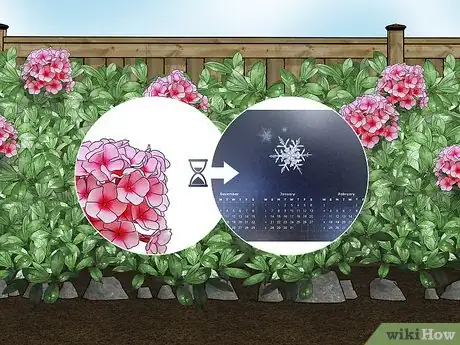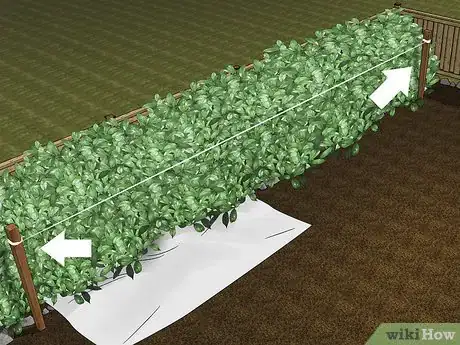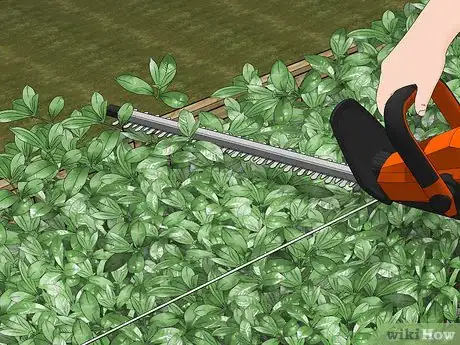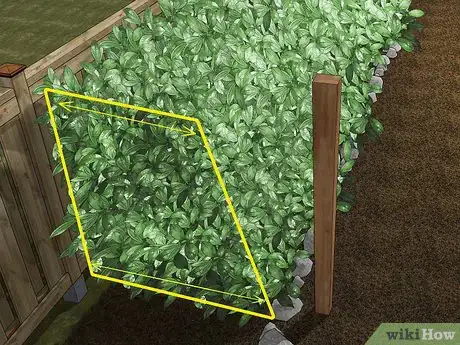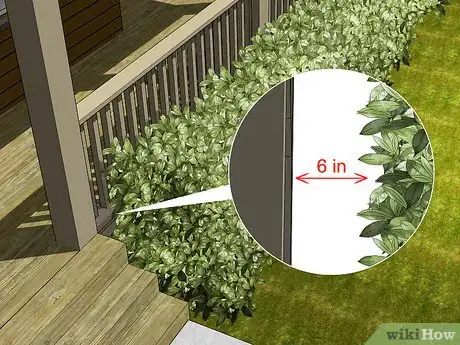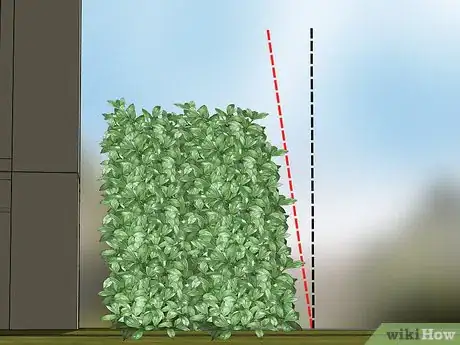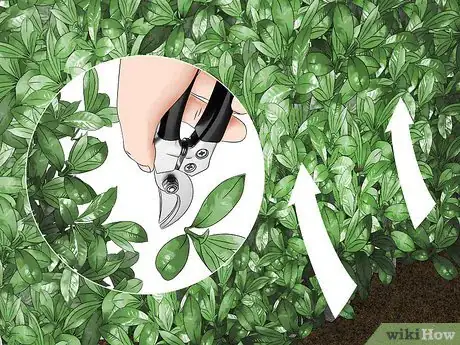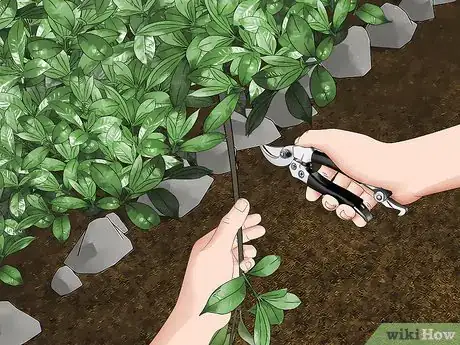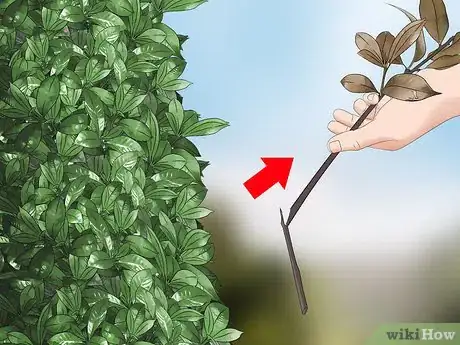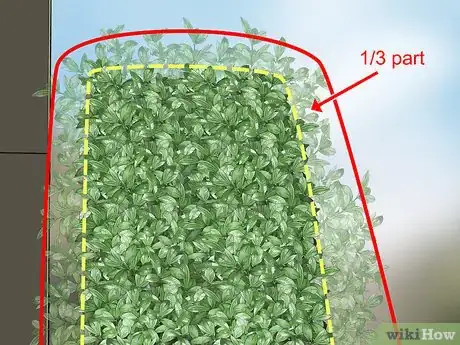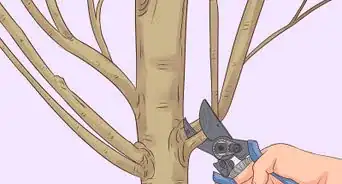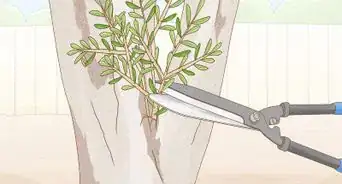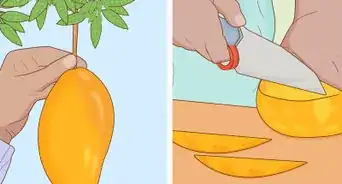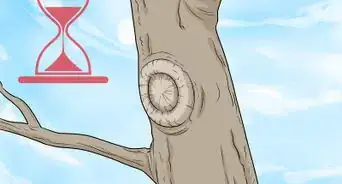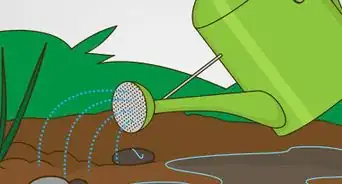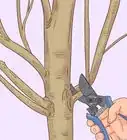This article was co-authored by Mike Garcia. Mike Garcia is a Licensed Landscape Contractor and the Founder of Enviroscape LA, a full-service landscape design and construction firm in Los Angeles, California. With over 30 years of experience, Mike specializes in sustainable landscape practices. Mike holds an Ornamental Horticulture degree, C-27 Landscape Contractor and D-49 Tree Service Contractor licenses, and Permaculture Design, California Naturalist, International Certified Professional Pond Contractor, and Pond Building certifications. He is one of eight Internationally Certified Pond Builders in the world. Enviroscape LA has won landscape and water feature awards from the International Professional Pond Contractors Association (IPPCA), National Association of Pond Professionals (NAPP), and the California Landscape Contractors Association (CLCA). Mike is a past president of the CLCA and currently serves on their local Board of Directors. Enviroscape LA has been featured in PONDS USA Magazine, Pond and Garden Lifestyles Magazine, and the Los Angeles Times. Mike has appeared on Extreme Home Makeover, HGTV's Landscapers Challenge, and A & E's series Fix That Yard.
There are 7 references cited in this article, which can be found at the bottom of the page.
This article has been viewed 209,740 times.
Shrubs can make a beautiful addition to any yard or garden, but if left to grow on their own, can look out of control. Routinely trimming your shrubs can help them look well-maintained and prevent them from damaging your home's siding. Trimming shrubs can be done, in most cases, by amateur gardeners. Once you learn the right trimming technique, your shrubs will look beautiful in no time.
Steps
Leveling Shrub Height
-
1Examine your shrub for blooms to determine when you should trim it. For blooming shrubs, trim them in the winter when they're dormant to prevent stunting flower growth. You can trim non-flowering shrubs anytime except late autumn when any new growth the plant has after trimming won't have time to mature before it goes dormant.[1]
- If you're growing a hedge, trim it when the branches look overgrown until about 6 weeks before your area's usual first frost.
- Avoid doing extensive trimming when it is not your shrub's trimming season. Light trimming to keep it from looking overgrown is fine, but too much may damage your plant.
-
2Lay a tarp around the shrub you trim. This will make cleanup easier and catch any small branches or leaves that fall on the ground. If you're trimming multiple shrubs, clean the tarp off and move it around as you work through the different shrubs.Advertisement
-
3Use 2 stakes as a guide while you level the shrub. Set up 2 stakes on each side of the shrub and tie a string between them. Keep the string taut and use it as the height that you'll trim the shrub to. If you want an especially precise measurement, use a level to position the strings to make sure they are even.[2]
- If the shrub is small and close to your home or siding, you could also use either as a leveling guide as you cut.
-
4Use your shears or a hedge trimmer to cut along the top. Avoid cutting below the guideline to keep your leveling job even. When you've finished trimming along the top, examine your work. Check for and cut away any remaining branches that seem out of place.
- A hedge trimmer is ideal for cutting the shrub's height because running it over the top will give you a smoother finish.
-
5Keep the top narrower than the base. The base of your shrub should be the widest part of the plant. Examine the shrub after you have made the top even. If your shrub seems top-heavy, use your shears or hedge trimmer to make it thinner.[3]
Trimming Shrub Sides
-
1Keep the shrub's sides 6–12 inches (15–30 cm) inches away from your home. This will keep the plant from rubbing against your home's walls, which prevents scratches in your siding. If your shrub currently brushes against your home, measure 6–12 inches (15–30 cm) out and mark the distance you will cut it away from your home.[4]
- Because plants need water to survive, any shrubs touching your home could cause water damage over time.
-
2Begin cutting near the bottom of the shrub and work your way to the top. Cut in smooth, even strokes to keep the shrub's sides even. As you cut, keep the base wider than the rest of the shrub to help the plant look balanced.[5]
-
3Cut the sides at a slight angle. This will help keep the plant narrow at the top and wide at the bottom. If the plant is widest at its bottom, sunlight will be able to reach the lower branches and maintain the leaves' green color.[6]
-
4Make shallow cuts as you work your way up. Avoid cutting too deeply as you work. Remove 1–3 inches (2.5–7.6 cm) at a time, particularly from the base, to prevent trimming away too much. You can always cut more later if you're unsatisfied with the shrub's shape.
- Try to retain the shrub's natural shape as much as possible to keep it healthy.[7]
-
5Examine the sides for uneven areas when you're finished cutting. Check the shrub's overall shape and look for any branches that stick out. If you spot unruly branches or feel that the shrub looks uneven, make adjustments with your shears until the plant looks even and balanced.[8]
Removing Dead, Diseased, or Overgrown Branches
-
1Cut away the thickest overgrown branches first. Use your shears or a hedge trimmer to cut unruly branches back from the base. This will prevent overgrown branches from sticking out too far and promote new side growth.[9]
-
2Clear out some limbs near the center. If your shrub has multiple overgrown branches around the center, cut several back to the base with your trimmer. As you clear limbs, try to retain the plant's natural shape and keep the base the widest part.
- Thinning out the center will help light reach the bottom branches.
- Avoid cutting center branches that aren't overgrown, as trimming too many main branches can harm shrubs.
-
3Remove diseased or damaged branches or branch segments. Inspect your shrub for sick-looking or broken branches, which must be removed to retain the plant's health. Cut away any rotten parts of the branch until you reach healthy wood. If part of a branch is healthy, you do not need to remove it in its entirety. Just remove as much of the dead or unhealthy section as possible.
- Research common pests or diseases your shrub might suffer from and keep an eye out for early signs of damage.
-
4Do not remove more than 1/3 of the shrub. Cutting more than 1/3 of the plant makes it weaker and vulnerable to pests or diseases. If you feel like you might be over trimming the plant, smooth your work out as best as you can and finish trimming the shrub.[10]
Expert Q&A
Did you know you can get expert answers for this article?
Unlock expert answers by supporting wikiHow
-
QuestionWhat is the best time of the year to trim bushes?
 Maggie MoranMaggie Moran is a Professional Gardener in Pennsylvania.
Maggie MoranMaggie Moran is a Professional Gardener in Pennsylvania.
Home & Garden Specialist
-
QuestionHow do you prune a shrub?
 Maggie MoranMaggie Moran is a Professional Gardener in Pennsylvania.
Maggie MoranMaggie Moran is a Professional Gardener in Pennsylvania.
Home & Garden Specialist
-
QuestionCan you cut back a holly bush?
 Maggie MoranMaggie Moran is a Professional Gardener in Pennsylvania.
Maggie MoranMaggie Moran is a Professional Gardener in Pennsylvania.
Home & Garden Specialist
Things You'll Need
- Tarp
- Hedge trimmer or shears
- String
- Two posts
- Level
References
- ↑ https://www.bhg.com/gardening/trees-shrubs-vines/care/what-to-prune-when/
- ↑ https://www.lowes.com/projects/gardening-and-outdoor/pruning-hedges/project
- ↑ http://mikesbackyardnursery.com/2017/06/the-correct-or-proper-way-to-trim-shrubs/
- ↑ https://www.youtube.com/watch?v=Bd4elZ7eglI&feature=youtu.be&t=12
- ↑ http://mikesbackyardnursery.com/2017/06/the-correct-or-proper-way-to-trim-shrubs/
- ↑ http://mikesbackyardnursery.com/2017/06/the-correct-or-proper-way-to-trim-shrubs/
- ↑ https://digitalcommons.usu.edu/cgi/viewcontent.cgi?article=1781&context=extension_histall
- ↑ Mike Garcia. Licensed Landscape Contractor. Expert Interview. 20 November 2020.
- ↑ https://www.lowes.com/projects/gardening-and-outdoor/pruning-hedges/project
About This Article
To trim a shrub, start by cutting in smooth, even strokes near the bottom of the shrub and working your way to the top. Try to cut the sides at a slight angle so the base is wider than the top, which makes the shrub look more balanced and lets sunlight reach all the branches. As you work your way up, make shallow, 1-3 inch cuts to start with, then go back and trim more if you want. You should also keep as much of the shrub’s natural shape as you can, so it stays healthy after the trim. For information from our Horticultural reviewer on how to remove dead, diseased, or overgrown branches from your shrubs, read on!
